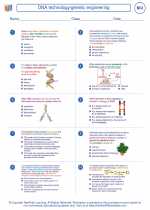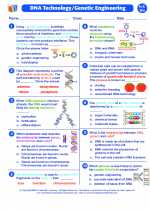CRISPR: A Comprehensive Guide
CRISPR, which stands for Clustered Regularly Interspaced Short Palindromic Repeats, is a revolutionary gene-editing technology that allows scientists to make precise changes to an organism's DNA. It has garnered significant attention for its potential applications in various fields, including medicine, agriculture, and biotechnology.
Understanding CRISPR
CRISPR is derived from a natural defense mechanism found in bacteria that allows them to defend against invading viruses. The CRISPR system consists of two main components: the Cas9 protein and a guide RNA (gRNA). The gRNA is designed to target a specific sequence of DNA, while the Cas9 protein acts as a pair of molecular scissors, cutting the DNA at the targeted location.
Applications of CRISPR
CRISPR technology has the potential to revolutionize the fields of medicine and biotechnology. Some of its key applications include:
- Gene Therapy: CRISPR can be used to correct genetic mutations responsible for diseases such as cystic fibrosis, sickle cell anemia, and certain types of cancer.
- Agriculture: CRISPR can be employed to develop crops with enhanced nutritional value, improved resistance to pests and diseases, and increased yield.
- Biotechnology: CRISPR has the potential to create designer organisms for various purposes, such as producing biofuels, pharmaceuticals, and industrial chemicals.
Ethical and Legal Considerations
Despite its tremendous potential, the use of CRISPR also raises ethical and legal concerns. These include issues related to the potential misuse of the technology, the creation of genetically modified organisms, and the implications of making heritable changes to the human germline.
Study Guide
To gain a comprehensive understanding of CRISPR, consider the following study guide:
- Learn about the history and discovery of CRISPR, including the seminal research that led to its development.
- Understand the molecular mechanism of CRISPR, including the roles of the Cas9 protein and guide RNA in gene editing.
- Explore the current and potential applications of CRISPR in medicine, agriculture, and biotechnology.
- Examine the ethical and legal implications of using CRISPR, and consider the societal impact of its widespread adoption.
- Stay updated on the latest developments in CRISPR research and its practical implementation.
By delving into these aspects, you will develop a comprehensive understanding of CRISPR and its implications for the future of genetic engineering and biotechnology.
.◂Biology Worksheets and Study Guides High School. DNA technology/genetic engineering

 Worksheet/Answer key
Worksheet/Answer key
 Worksheet/Answer key
Worksheet/Answer key
 Worksheet/Answer key
Worksheet/Answer key
 Vocabulary/Answer key
Vocabulary/Answer key
 Vocabulary/Answer key
Vocabulary/Answer key
 Vocabulary/Answer key
Vocabulary/Answer key
